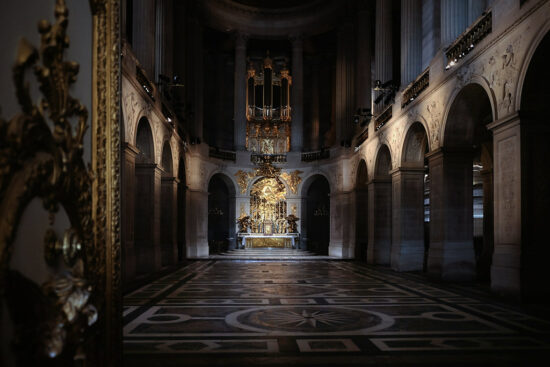Introduction
The Three Musketeers, written by Alexandre Dumas, is a timeless novel that has captivated readers for generations. Published in 1844, this historical adventure takes place in 17th-century France and follows the journey of a young man named d’Artagnan as he navigates the treacherous world of politics, love, and honor. With its engaging plot, memorable characters, and rich historical backdrop, The Three Musketeers continues to enthrall readers and leave a lasting impact on literature.
Plot and Storyline
The novel begins with d’Artagnan, a young Gascon nobleman, setting off to Paris with the dream of becoming a musketeer, a member of the King’s elite guard. Along the way, he encounters Athos, Porthos, and Aramis, three musketeers who become his loyal friends and mentors. Together, they navigate the complex web of courtly intrigue, personal vendettas, and political schemes that define the era.
As the story unfolds, d’Artagnan finds himself entangled in a web of love and betrayal. He becomes embroiled in a love affair with Constance Bonacieux, the queen’s seamstress, and faces numerous challenges, including duels, secret missions, and dangerous encounters with Cardinal Richelieu and his henchman, Milady de Winter. The plot takes a dramatic turn when d’Artagnan discovers a plot to discredit the queen and must rally his friends to save her honor and protect their own lives.
Characters
The novel features a diverse cast of characters, each with their own motivations and complexities.
1. D’Artagnan: The protagonist, d’Artagnan, is a courageous and impulsive young man. Throughout the story, he undergoes a transformation from a brash and inexperienced youth to a skilled and honorable musketeer. His unwavering loyalty to his friends and his pursuit of justice make him a compelling and relatable character.
2. Athos, Porthos, and Aramis: The three musketeers are d’Artagnan’s mentors and closest companions. Athos is a brooding and mysterious figure with a tragic past; Porthos is a jovial and larger-than-life character with a penchant for luxury; and Aramis is an intelligent and romantic musketeer torn between his duty and his religious aspirations. Each musketeer brings a unique dynamic to the group and contributes to the camaraderie and sense of adventure.
3. Cardinal Richelieu: The main antagonist, Cardinal Richelieu, is a cunning and manipulative figure who seeks to undermine the queen and consolidate his power. His machinations drive much of the conflict in the story and pose a constant threat to the musketeers and their mission.
Themes and Symbols
The Three Musketeers explores several themes that resonate with readers:
1. Loyalty and Friendship: The novel emphasizes the importance of loyalty and camaraderie. The bond between d’Artagnan and the musketeers serves as a powerful symbol of friendship and mutual support in the face of adversity.
2. Honor and Chivalry: The concept of honor and adherence to a code of chivalry is a recurring theme throughout the novel. The musketeers embody these ideals, often sacrificing personal gain for the sake of honor and duty.
3. Love and Betrayal: Love and betrayal are central to the plot. The romantic relationships between d’Artagnan and Constance, as well as the complicated history between Athos and Milady de Winter, explore the complexities of love and the consequences of betrayal.
Writing Style
Dumas’s writing style in The Three Musketeers is characterized by its fast-paced narrative, vivid descriptions, and witty dialogue. His prose is engaging and accessible, allowing readers to immerse themselves in the story. Dumas employs various literary techniques, such as foreshadowing, irony, and dramatic tension, to keep readers on the edge of their seats. For example, the author’s use of foreshadowing builds anticipation and adds depth to the plot.
Setting and Atmosphere
The novel is set in 17th-century France, a time of political turmoil, social hierarchy, and dueling traditions. The vivid descriptions of Parisian streets, royal palaces, and countryside landscapes create a rich and immersive atmosphere. The cultural context of the novel, with its emphasis on courtly etiquette and the power struggles between the monarchy and the church, adds depth to the story and enhances the reader’s understanding of the characters’ motivations.
Historical, Social, or Political Context
The Three Musketeers is set during a pivotal period in French history known as the Age of Musketeers. The novel reflects the political tensions of the time between the monarchy and the cardinal-led government. It provides insights into the social hierarchies, courtly intrigues, and the code of honor prevalent during that era. The story also touches upon the historical events of the Siege of La Rochelle and the conflict between France and England.
Dumas’s portrayal of Cardinal Richelieu and his manipulation of the political landscape reflect the author’s critique of the abuse of power and the corruption within the ruling class. The novel offers commentary on the complexities of politics and the consequences of personal ambitions on the larger societal framework.
How does Alexandre Dumas use the historical, social, and political context of 17th-century France to enhance the narrative and themes in The Three Musketeers?
Alexandre Dumas masterfully utilizes the historical, social, and political context of 17th-century France to enrich the narrative and explore various themes in The Three Musketeers. The novel is set during a time of political turmoil, with France engaged in conflicts both internally and externally. The power struggles between the monarchy and the cardinal-led government are reflected in the machinations of Cardinal Richelieu, the main antagonist of the story.
Dumas highlights the social hierarchies and courtly intrigues prevalent during the era, providing readers with insight into the complex dynamics of the time. The novel delves into the strict codes of etiquette and honor that governed the behavior of the aristocracy, emphasizing themes of loyalty, chivalry, and personal reputation. The societal expectations and class divisions create tension and conflict for the characters, driving the plot forward.
Furthermore, The Three Musketeers touches upon historical events such as the Siege of La Rochelle, a significant conflict during the time period. By incorporating these historical events, Dumas adds authenticity to the story and grounds it in a recognizable reality. This historical backdrop serves as a catalyst for the characters’ actions and motivations, heightening the stakes and emphasizing the consequences of their decisions.
Dumas also offers a critical lens on the political landscape of 17th-century France. Through his portrayal of Cardinal Richelieu and his manipulation of the power dynamics, Dumas critiques the abuse of power and the corruption within the ruling class. The novel serves as a commentary on the complexities of politics, highlighting the personal ambitions and agendas that can impact the larger societal framework.
In summary, Dumas skillfully utilizes the historical, social, and political context of 17th-century France to enhance the narrative and themes in The Three Musketeers. By incorporating elements such as power struggles, social hierarchies, and historical events, Dumas creates a rich and immersive world that adds depth to the story and resonates with readers.
How has The Three Musketeers by Alexandre Dumas influenced subsequent works and popular culture?
The Three Musketeers by Alexandre Dumas has had a profound influence on subsequent works of literature and popular culture. Its enduring popularity and timeless appeal have solidified its status as a classic and have inspired countless adaptations and reinterpretations.
In literature, the novel has served as a source of inspiration for authors and has influenced the development of adventure and historical fiction. Dumas’s swashbuckling action, memorable characters, and intricate plot have set a standard for storytelling in the genre. Many authors have sought to capture the spirit of adventure and camaraderie found in The Three Musketeers, drawing inspiration from its themes of loyalty, honor, and heroism. The novel’s impact can be seen in works such as Rafael Sabatini’s Captain Blood and Sir Arthur Conan Doyle’s The Lost World, among others.
The Three Musketeers has also made a significant impact on popular culture through its numerous adaptations in film, television, and stage. Countless movies, including the 1993 version starring Charlie Sheen, Kiefer Sutherland, and Chris O’Donnell, have brought the story to life on the silver screen. The characters of d’Artagnan, Athos, Porthos, and Aramis have become iconic figures, recognized by audiences worldwide. The story’s themes of friendship, loyalty, and adventure continue to resonate with viewers of all ages.
Furthermore, the novel has inspired stage adaptations, with theatrical productions showcasing the swashbuckling action and dramatic conflicts of the story. The timeless appeal of The Three Musketeers has ensured its continued presence in popular culture, with adaptations and reinterpretations catering to contemporary audiences.
In conclusion, The Three Musketeers by Alexandre Dumas has left a significant imprint on subsequent works and popular culture. Its influence can be seen in the development of adventure and historical fiction, as well as in the numerous adaptations that have brought the story to new audiences. The novel’s enduring themes and memorable characters have cemented its place as a beloved classic and continue to captivate readers and viewers alike.
Final Conclusions
In conclusion, The Three Musketeers by Alexandre Dumas remains an iconic adventure novel that has stood the test of time. With its thrilling plot, memorable characters, and exploration of themes such as friendship, honor, and love, it continues to captivate readers and leave a lasting impact on literature. Dumas’s skillful writing style, historical context, and insightful commentary on politics and society add depth and resonance to the story. The Three Musketeers is a testament to the enduring power of storytelling and serves as a reminder of the timeless allure of adventure and heroism.
Sources
The Three Musketeers – Wikipedia






